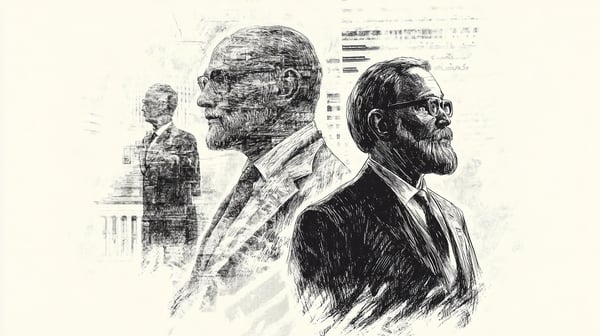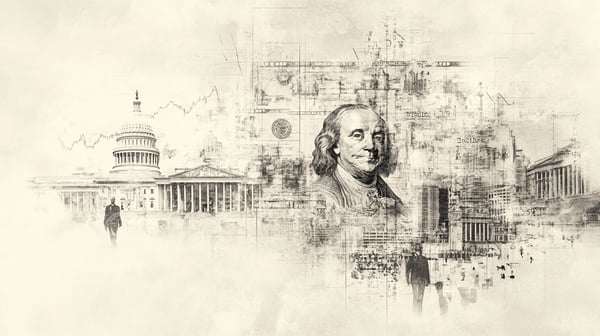The Bank of the Future in the Sixth Technological Wave

The dawn of the sixth technological wave heralds a profound transformation across all facets of human activity, from manufacturing and science to commerce and governance. This new era is defined not by discrete technological advancements but by the seamless integration of breakthroughs such as artificial intelligence, additive manufacturing, photonics, virtual reality, blockchain, and big data. These technologies converge to create a highly automated, decentralized, and interconnected world where traditional economic paradigms are redefined. In this context, banks—cornerstones of the financial system—must evolve fundamentally to remain relevant and to serve the needs of an economy that operates on entirely different principles.
The future economy will likely function on a framework of decentralized, digital-first ecosystems. Economic activity will be underpinned by blockchain networks, where trust is no longer intermediated by centralized institutions but rather embedded within the system itself. Value will move fluidly across borders and systems through tokenized assets and programmable currencies, with blockchain providing the infrastructure for secure and transparent transactions. In such a world, traditional banking functions—such as lending, asset custody, and payments—will be reimagined to leverage the speed, efficiency, and flexibility of distributed ledger technology.
AI and big data will further transform the fabric of economic decision-making. Predictive algorithms will analyze vast streams of real-time data to optimize resource allocation, anticipate market shifts, and personalize financial services. In this interconnected and data-rich environment, banks will no longer merely react to customer needs but will anticipate them, offering proactive solutions that align with individual and collective goals. For example, AI could dynamically allocate credit based on real-time business performance, environmental metrics, or social contributions, thereby aligning financial incentives with broader societal objectives.
The integration of additive technologies and automation will also reshape the production and consumption landscape. Goods will be manufactured closer to the point of need using 3D printing and other additive processes, reducing reliance on global supply chains and shifting the focus of economic activity to regional or local hubs. Banks will play a critical role in financing this decentralized manufacturing ecosystem, providing capital for micro-factories and facilitating trade through blockchain-enabled supply chain networks. Moreover, they will support the monetization of these technologies by offering platforms for fractional ownership of production assets and intellectual property.
The concept of ownership itself will evolve as digital assets and tokenization become ubiquitous. Individuals and businesses will no longer view assets solely as physical properties but as fluid, divisible, and tradeable units of value. From real estate and renewable energy installations to intellectual property and even personal data, everything will be tokenized, creating new opportunities for liquidity and investment. Banks, as custodians of these tokenized assets, will need to provide secure and interoperable platforms for their management, exchange, and utilization. The transition from a physical to a digital-first economy will demand robust infrastructure, and banks will position themselves as the facilitators of this transition, leveraging blockchain and photonic technologies to ensure security, speed, and transparency.
Virtual reality and augmented reality will redefine how financial services are delivered and experienced. Banks will no longer operate physical branches; instead, they will exist as immersive virtual spaces where customers can interact with financial advisors, access services, and collaborate with other stakeholders in a seamless and engaging manner. These virtual environments will be powered by advanced AI, ensuring that every interaction is personalized and efficient. For instance, a business owner in a virtual banking environment might simultaneously negotiate a loan with an AI advisor, tokenize their assets for collateral, and execute a smart contract for a cross-border transaction—all within the same immersive space.
The integrational use of nature will further redefine economic priorities, with sustainability becoming a cornerstone of the financial system. The circular economy, powered by blockchain-enabled transparency, will ensure that resources are utilized and reused efficiently. Banks will facilitate this shift by embedding sustainability metrics into every aspect of financial activity. For example, loans could be structured to incentivize sustainable practices, with interest rates tied to carbon reduction targets or resource efficiency metrics. Additionally, tokenized natural assets—such as forests or renewable energy projects—will become viable investment opportunities, aligning financial growth with ecological preservation.
This reimagined banking model will also support the emergence of decentralized autonomous organizations (DAOs) and self-sustaining financial ecosystems. Traditional hierarchies and intermediaries will be replaced by networks governed by consensus and driven by algorithms. Banks, as facilitators of these systems, will provide the tools and platforms necessary for their operation, including decentralized identity solutions, programmable currencies, and trustless escrow mechanisms. The integration of AI and big data into these systems will enable reflective management, allowing organizations to adapt dynamically to changing economic conditions.
In this world, the role of the bank transcends its historical boundaries. It becomes a foundational layer of the economy, enabling seamless interactions between people, machines, and ecosystems. Banks will no longer be isolated entities but will function as part of a larger, adaptive network of interconnected systems, where financial services are embedded into every aspect of daily life. This model represents not just an evolution of banking but a fundamental rethinking of its purpose and potential.
The sixth technological wave thus offers an unprecedented opportunity to reimagine the financial system in ways that align with the challenges and opportunities of the 21st century. By embracing the integration of these transformative technologies, banks can serve as catalysts for a decentralized, transparent, and equitable economy, driving innovation and inclusivity on a global scale.
Join Montes Auri on our path to become the leading licenced pan-european Crypto Bank.




